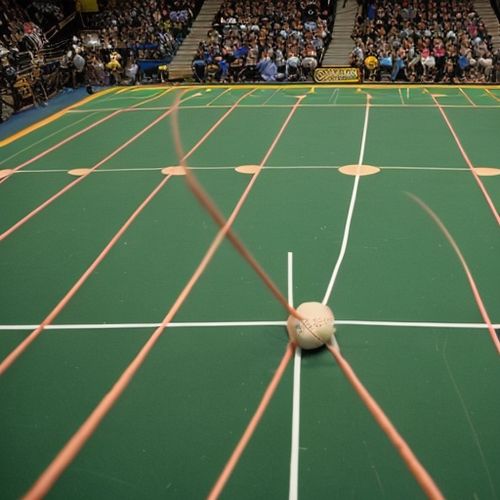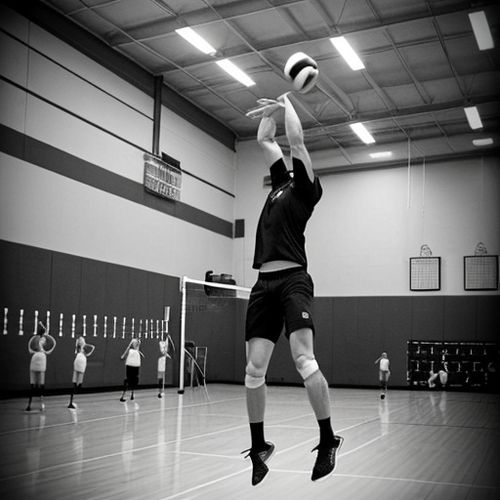The art of relay baton passing is one of the most thrilling yet technically demanding aspects of track and field. While speed is undeniably crucial in relay races, the efficiency of the baton exchange often determines the outcome of the race. A seamless handoff can propel a team to victory, while a fumbled exchange can cost precious seconds, leaving even the fastest runners unable to recover. The precision, timing, and trust required between teammates make relay races a unique spectacle in athletics.
The Fundamentals of Baton Exchange
At its core, the relay baton pass is about maintaining momentum. The incoming runner must approach at full speed while the outgoing runner begins accelerating just before receiving the baton. The exchange typically happens within a 20-meter zone, requiring split-second coordination. Runners use either an upsweep or downsweep technique—each with its own advantages. The upsweep involves the outgoing runner reaching back with their palm facing up, while the downsweep has them extending their arm with the palm facing down. The choice depends on team strategy and individual comfort.
Communication is key during the exchange. Verbal cues like "stick!" or "go!" are common, but elite teams often rely on subtle non-verbal signals developed through countless hours of practice. The incoming runner must judge when to release the baton, while the outgoing runner must time their acceleration perfectly to avoid leaving too early or too late. Even the slightest hesitation can disrupt the flow, turning a potential winning handoff into a disaster.
The Psychology of Relay Racing
Beyond physical technique, relay racing demands extraordinary psychological synchronization. Unlike individual sprints where athletes compete alone, relay runners must function as a single unit. The pressure of not letting teammates down adds another layer of complexity. Many coaches emphasize trust-building exercises alongside physical training because confidence in one's teammates directly translates to smoother exchanges during competition.
This psychological aspect becomes particularly evident in championship settings. At major events like the Olympics or World Championships, the weight of expectation amplifies the difficulty of baton exchanges. Teams that appear dominant in preliminary rounds sometimes falter in finals due to nervous handoffs. Conversely, underdog teams occasionally outperform faster opponents through flawless exchanges that maximize their collective potential.
Historical Evolution of Relay Techniques
Relay racing has undergone significant technical evolution since its introduction in early 20th century athletics. Initially, runners would simply pass the baton without specialized techniques, often losing considerable momentum. The development of the exchange zone in the 1930s marked a turning point, forcing teams to refine their methods. Over decades, various nations developed distinct styles—American teams perfected the downsweep while some European squads favored the upsweep approach.
The 1990s saw revolutionary changes with the emergence of the "blind handoff," where the outgoing runner starts accelerating without looking back, relying entirely on timing and trust. This technique, popularized by dominant U.S. and Jamaican teams, allowed for faster overall times but required unprecedented precision. Modern relay training now incorporates video analysis and sensor technology to measure approach speeds and perfect exchange timing down to the millisecond.
Training for Perfect Exchanges
Elite relay teams dedicate as much as 30% of their training time specifically to baton exchanges. Drills often involve running at sub-maximum speeds to focus on technique before gradually increasing velocity. Some coaches implement "over-distance" training where runners practice exchanges while fatigued to simulate late-race conditions. Resistance training with bungee cords helps outgoing runners develop explosive starts, while laser timing systems provide instant feedback on exchange efficiency.
Interestingly, many top teams maintain the same running order for years to build chemistry. The leadoff runner typically excels at block starts, the second and third legs feature strong curve runners, while the anchor leg possesses both speed and competitive toughness. This specialization means each exchange involves different technical considerations—the first handoff occurs from standing start to moving runner while subsequent exchanges happen between two athletes at full speed.
Equipment and Technological Advancements
While the relay baton itself appears simple—typically an aluminum tube weighing about 50 grams—its design has been refined through material science. Modern batons feature textured surfaces for better grip and aerodynamic shaping to minimize air resistance. Some teams experiment with different baton weights during training to build hand strength while others use glow-in-the-dark batons for night practice sessions.
Video technology has transformed relay training, with high-speed cameras capturing exchanges at 1000 frames per second to analyze every millimeter of movement. Some national teams now employ motion sensors that provide real-time data on runners' positions and speeds during practice exchanges. This technological integration allows coaches to make microscopic adjustments that can mean the difference between gold and silver at championship levels.
Memorable Relay Moments in History
The annals of track and field contain numerous relay moments that highlight the importance of baton passing. The 2008 Beijing Olympics 4x100m final saw both triumph and heartbreak—Jamaica's world record performance featuring seamless exchanges contrasted with the U.S. team's disqualification for a botched handoff despite superior individual speed. Similarly, the 1992 Barcelona Games witnessed an underdog British team claiming gold through flawless exchanges that compensated for slower individual times.
These historic races demonstrate that relay success depends on more than assembling four fast runners. The ability to perform under pressure, to trust teammates implicitly, and to execute with technical perfection under the brightest lights separates great relay teams from merely good ones. As athletics continues evolving, the relay baton exchange remains one of sport's purest tests of teamwork and precision.

By Rebecca Stewart/May 8, 2025

By Rebecca Stewart/May 8, 2025

By Joshua Howard/May 8, 2025

By Lily Simpson/May 8, 2025

By Victoria Gonzalez/May 8, 2025

By Christopher Harris/May 8, 2025

By Ryan Martin/May 8, 2025

By Megan Clark/May 8, 2025

By Samuel Cooper/May 8, 2025

By Noah Bell/May 8, 2025

By David Anderson/May 8, 2025

By Megan Clark/May 8, 2025

By William Miller/May 8, 2025

By William Miller/May 8, 2025

By Emily Johnson/May 8, 2025

By Ryan Martin/May 8, 2025

By Laura Wilson/May 8, 2025

By Eric Ward/May 8, 2025

By Joshua Howard/May 8, 2025

By Natalie Campbell/Apr 9, 2025